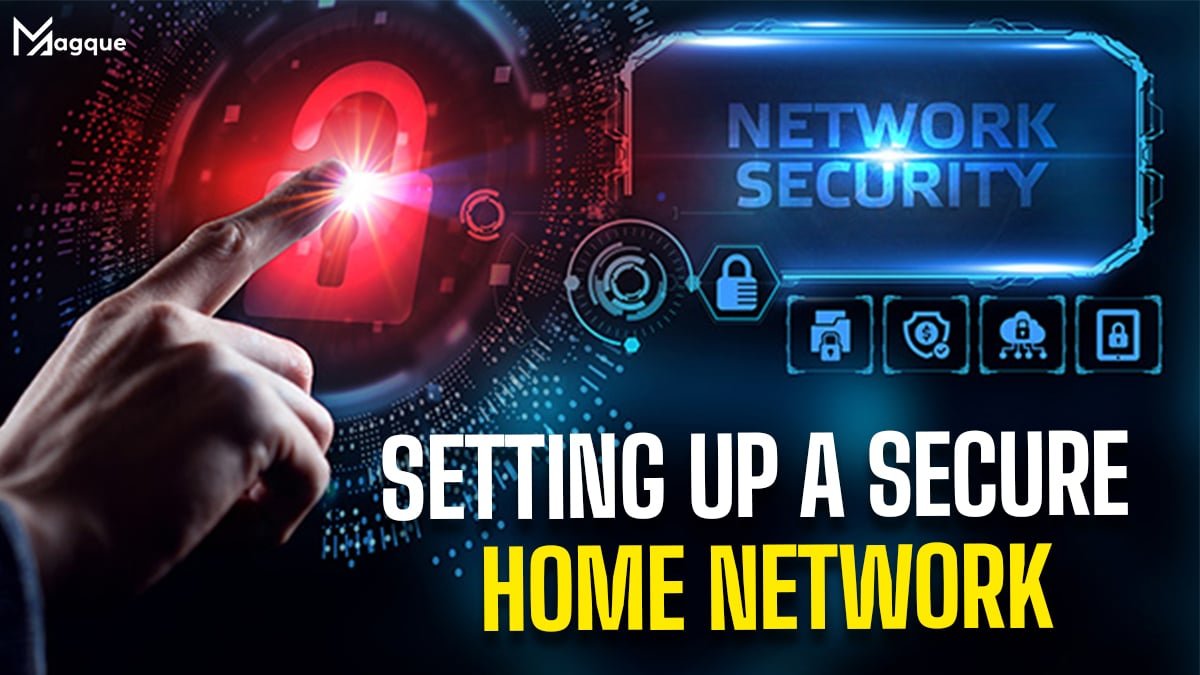In content marketing, standing out is more than just a goal—it’s necessary. Imagine trying to shout over the roar of a waterfall; that’s what it feels like to compete in the digital space. But what if I told you there’s a secret sauce to being heard and remembered? That secret lies in the art of setting up a secure home network, a topic we’re diving deep into today. Let’s unwrap this together, shall we?
Why a Secure Home Network Matters for Content Creators
First, you might wonder, “Why should I, as a content creator, care about my home network’s security?” Well, think of your home network as the foundation of your digital house. If the foundation is shaky, the entire house is at risk. In the same way, a vulnerable network can put your content, personal information, and digital assets in jeopardy.
Steps to Beef Up Your Home Network Security
- Change the Default Router Settings: This might seem a no-brainer, but you’d be surprised how many people skip this step. The default settings on routers are a hacker’s playground. Changing your network’s name (SSID) and password is like installing a sturdy lock on your front door.
- Update Regularly: Like your favorite apps, your router needs updates. These updates patch any security holes, making your network tougher for intruders to crack.
- Enable Network Encryption: Encrypting your network is like sending your data through a secret tunnel. It’s scrambled so that only someone with the key (that’s you!) can unscramble it.
- Use a VPN: A Virtual Private Network (VPN) is your cloak of invisibility. It hides your online activities, making it harder for snoops to track you.
- Implement Strong Passwords: We’ve all heard this one, but it bears repeating. A strong, unique password is your first line of defense. Think of it as the guard dog of your digital domain.
- Regularly Monitor Your Network: Look for any unusual activity. It’s like knowing there’s a fox in the henhouse before it gets to the chickens.
The Role of Content in Network Security
Now, how does this all tie back to content marketing? Simply put, the security of your home network can influence the integrity and credibility of your content. Imagine losing months of work to a security breach or having your website flagged for spreading malware. Not exactly the reputation you want, right?
Content Marketing Best Practices for Secure Networks
- Educate Your Audience: Use your platform to share the importance of network security. It’s about protecting your content and being a responsible member of the digital community.
- Share Personal Experiences: If you’ve had a security scare, share it. Nothing beats real-life stories to drive a point home.
- Stay Informed: The digital landscape is always changing. By staying informed about the latest security threats and trends, you become a valuable resource for your audience.
Conclusion
In conclusion, a secure home network is not just a technical necessity; it’s a cornerstone of your success in content marketing. By following these best practices, you’re not just protecting your digital assets but building trust with your audience. Ultimately, trust is the most valuable currency in the content marketing world. Remember, in the digital age, your security is your signature. Let’s make it a strong one. And be sure to explore Magque, your go-to source for the latest and most intriguing updates in the realms of informative tips & reviews!
FAQs
Q1. What are the essential steps to secure my home network?
The essential steps to secure your home network include:
- Changing the default login credentials for your router.
- Enabling WPA2 or WPA3 encryption on your Wi-Fi network.
- Updating router firmware regularly.
- Enabling a firewall.
- Restricting remote management access if not needed.
Q2. How can I protect my Wi-Fi network from unauthorized access?
To protect your Wi-Fi network, set a strong and unique password (or network key). Also, consider enabling MAC address filtering, which allows only specified devices to connect to your network.
Q3. What is firmware, and why is it important to update it on my router?
Firmware is software that controls the functionality of hardware devices, such as routers. It’s crucial to regularly update your router’s firmware because manufacturers release updates to fix security vulnerabilities and improve performance. Outdated firmware may leave your network susceptible to cyber threats.
Q4. Should I enable guest network access on my router?
Enabling a guest network is a good practice. It provides a separate network for guests to connect to, keeping your primary network secure. Guests can access the internet but are isolated from their home devices. Ensure the guest network is password-protected, and consider setting usage limitations.
Q5. What additional security measures can I implement for a more secure home network?
In addition to the basic security steps, you can enhance your home network security by regularly scanning for malware using antivirus software, using a virtual private network (VPN) for secure remote access, disabling Universal Plug and Play (UPnP) if not needed, and regularly reviewing connected devices for any unauthorized access.
Read Also This:- The Future of Home Networking













